May 2012 archive
Today's topic is politicians commenting on how large things should be.
(Yes, it's a slow day.)
Mitt Romney, a couple months ago: Which explains why
a recent
poll of Michiganders asked such a burning question.
Which explains why
a recent
poll of Michiganders asked such a burning question.
N.B.: according to the poll, Michigan women were more likely than men to say the trees were the right height, and more Democrats thought the trees were the right height than did Republicans.
Legend has it that Abraham Lincoln was once asked how long a man's legs should be. His answer: long enough to reach the ground.
During the eclipse. I got a few glimpses through holes in
the clouds and can report that the moon was indeed in the way.
 Printed circuit board jargon includes the term
annular
ring. When I was in the PCB design software business, my co-workers and
I made fun of the term's redundancy by saying "ring-like annulus" instead.
Printed circuit board jargon includes the term
annular
ring. When I was in the PCB design software business, my co-workers and
I made fun of the term's redundancy by saying "ring-like annulus" instead.
Speaking of things annular, there's an eclipse tomorrow.
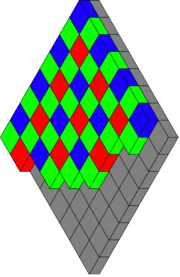 My digital camera, like most of them, has monochrome pixel sensors behind
a color filter
array. If a resulting image file has as many pixels as the
sensor does and if each of those pixels has combined R, G, and B values,
they were interpolated
by demosaicing software.
My digital camera, like most of them, has monochrome pixel sensors behind
a color filter
array. If a resulting image file has as many pixels as the
sensor does and if each of those pixels has combined R, G, and B values,
they were interpolated
by demosaicing software.
When I do the digital equivalent of taking black-and-white landscape pics with a red filter, the process wastes information and detail. That waste is irrelevant for the sizes of images I post here, but I wouldn't mind having a camera more optimized for black-and-white.
Film is always an option, and I have some nice, slow, black-and-white film from Croatia. But I take pictures more by trial and error than I would if I were a skilled photographer, and digital is good for making lots of exposures.
If digital cameras already have monochrome sensors in them, shouldn't it be easy to make one without the color filter array? Kodak made such a camera for a while, but it's discontinued. The Leica M Monochrom was introduced this month, but it's $7950.
I have no illusions that this trifle of a blog has influence on the powers that be, but yet: could Fuji or Canon or someone please make an affordable black-and-white digital camera? Last year, I wrote about Deep Springs College
The article quotes Cheney defending 'enhanced interrogation' techniques: "We didn't pull anybody's fingernails out with a file or something like that."
No, we just tortured some of them to death.
The guy should be in jail.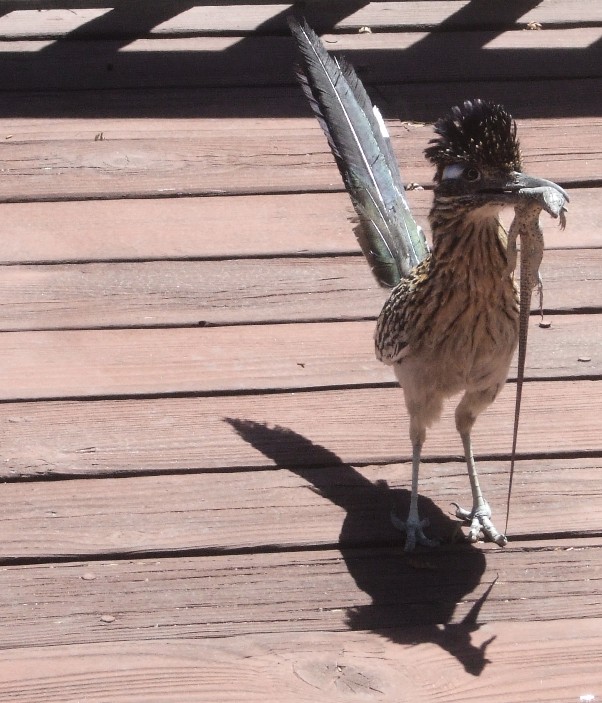
Mitt Romney, a couple months ago:
It just feels good being back in Michigan. You know, the trees are the right height. The streets are just right. I like the fact that most of the cars I see are Detroit-made automobiles.
 Which explains why
a recent
poll of Michiganders asked such a burning question.
Which explains why
a recent
poll of Michiganders asked such a burning question.
N.B.: according to the poll, Michigan women were more likely than men to say the trees were the right height, and more Democrats thought the trees were the right height than did Republicans.
Legend has it that Abraham Lincoln was once asked how long a man's legs should be. His answer: long enough to reach the ground.
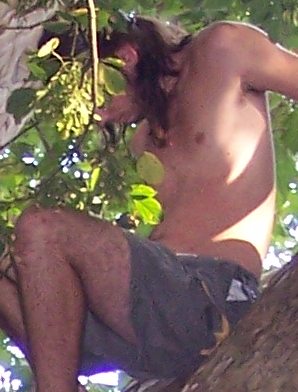 Wikipedia:
Wikipedia:
In Monty Python's Flying Circus, Doug Pirahna famously used sarcasm, litotes, bathos and metaphor to intimidate his victims. This was in contrast to his brother Dinsdale, who would nail their heads to tables.Accurate—but a stretch to be placed under Other languages in the article on litotes. I'm surprised the edit has lasted as long as it has. Can I just say that I love Wikipedia? I mean, what's not to like about having a scantily clad dude in a pic ostensibly of a sycamore tree. |
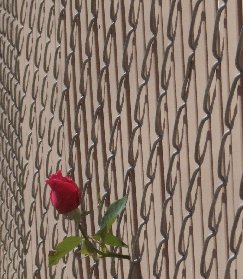 | 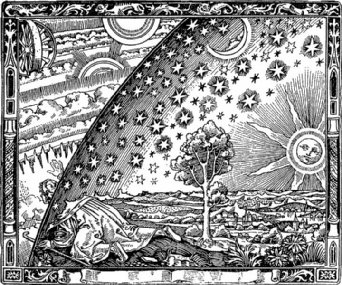 |
 Printed circuit board jargon includes the term
annular
ring. When I was in the PCB design software business, my co-workers and
I made fun of the term's redundancy by saying "ring-like annulus" instead.
Printed circuit board jargon includes the term
annular
ring. When I was in the PCB design software business, my co-workers and
I made fun of the term's redundancy by saying "ring-like annulus" instead.
Speaking of things annular, there's an eclipse tomorrow.

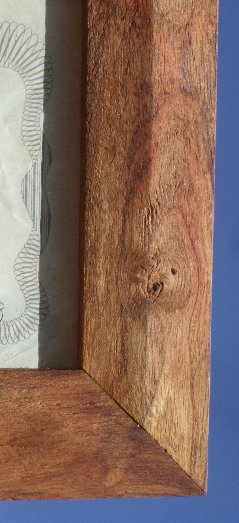 Caesalpinia
gilliesii, a shrub native to South America, is planted
around the American Southwest for its attractive flowers. When I saw
that a kind
of commercially-available lumber that I like was in the same subfamily
(Caesalpinioideae), I saved the thickest part of a
C. giliesii specimen and dried it out to see what kind of
wood it would yield. I got enough material for a small picture frame.
Caesalpinia
gilliesii, a shrub native to South America, is planted
around the American Southwest for its attractive flowers. When I saw
that a kind
of commercially-available lumber that I like was in the same subfamily
(Caesalpinioideae), I saved the thickest part of a
C. giliesii specimen and dried it out to see what kind of
wood it would yield. I got enough material for a small picture frame.
The good news is, the wood has nice color. The bad news is, the dust is noxious. Like really noxious. Like worse than any other wood I've used. Like it made my throat sore. This is the first and last frame I am ever making out of this stuff. Not that I thought I had any readers who were wondering whether to try making stuff out of Caesalpinia, but I hereby suggest not doing it. |
 My digital camera, like most of them, has monochrome pixel sensors behind
a color filter
array. If a resulting image file has as many pixels as the
sensor does and if each of those pixels has combined R, G, and B values,
they were interpolated
by demosaicing software.
My digital camera, like most of them, has monochrome pixel sensors behind
a color filter
array. If a resulting image file has as many pixels as the
sensor does and if each of those pixels has combined R, G, and B values,
they were interpolated
by demosaicing software.
When I do the digital equivalent of taking black-and-white landscape pics with a red filter, the process wastes information and detail. That waste is irrelevant for the sizes of images I post here, but I wouldn't mind having a camera more optimized for black-and-white.
Film is always an option, and I have some nice, slow, black-and-white film from Croatia. But I take pictures more by trial and error than I would if I were a skilled photographer, and digital is good for making lots of exposures.
If digital cameras already have monochrome sensors in them, shouldn't it be easy to make one without the color filter array? Kodak made such a camera for a while, but it's discontinued. The Leica M Monochrom was introduced this month, but it's $7950.
I have no illusions that this trifle of a blog has influence on the powers that be, but yet: could Fuji or Canon or someone please make an affordable black-and-white digital camera? Last year, I wrote about Deep Springs College
Time has caught up with the will of Deep Springs' founder. Last month, the college's trustees voted 10-2 to admit women. It's not a done deal; a court might enforce the Deed of Trust as written. We'll see.The 2 who voted against the 10 have asked our county's court to block the change to coëducation. Their filing recounts some of the history of the founder's estate planning:
At the time, there was a mortmain statute in place in California (...) that restricted a devise to a charitable organization to no greater than one-third of a decedent's estate unless that devise was executed by a person with no children, parents, or spouse at least six months before that person's death. Therefore, being childless, parentless, and a lifelong bachelor, if Nunn could live at least six months after October 1, 1924 (i.e., until April 1, 1925), he could leave as large an endowment as possible to Deep Springs from his estate.Nunn was dying a miserable death from tuberculosis and stuck around by force of will. He died on April 2.
After L. L. Nunn's death in 1925, his brother P. N. Nunn and close associates moved quickly to destroy L. L. Nunn's papers (likely consisting of several thousand files). There was a second purging by Frank Noon of L. L. Nunn's remaining papers at the college. Due to these massive culls any available articulation for why Mr. Nunn wanted to educate only "promising young men" was likely destroyed.The next court date is a status conference on June 22.

great headline. --->
The article quotes Cheney defending 'enhanced interrogation' techniques: "We didn't pull anybody's fingernails out with a file or something like that."
No, we just tortured some of them to death.
The guy should be in jail.

roadrunner 1, lizard 0
 I've
always liked Albrecht Dürer's work.
His paintings of animals are well known, as are his engravings (e.g.,
Melencolia I,
with the magic square). He wrote the some of the first books on mathematics
published in German language. I've
always liked Albrecht Dürer's work.
His paintings of animals are well known, as are his engravings (e.g.,
Melencolia I,
with the magic square). He wrote the some of the first books on mathematics
published in German language.
A recent article on Dürer told me a few things I hadn't heard before: that some homoerotically suggestive work of his had for a while been hidden away by researchers, and that a sexually explicit note on the margin of one of his portraits, long presumed to have been added by someone else, has been chemically analyzed and shown to be from Dürer's pen. A huge Dürer exhibition is opening in Nuremberg later this month. |